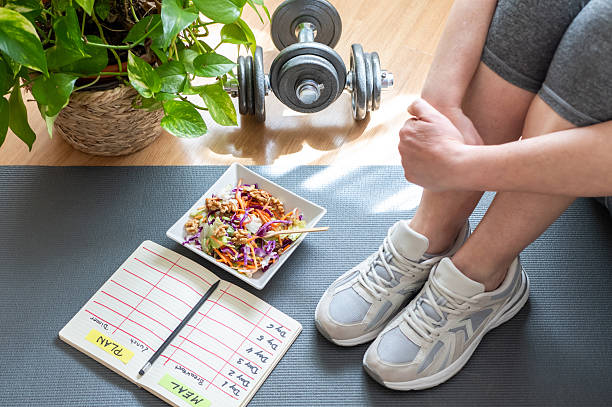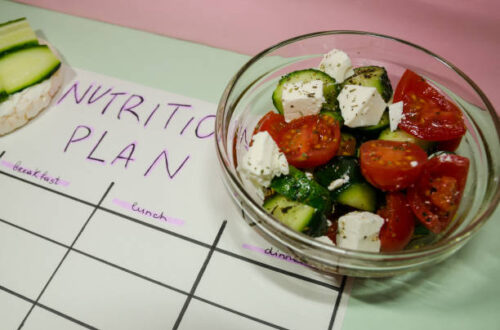Ever feel like you’re on a diet roller coaster? One week you’re eating salads and feeling great, the next you’re crashing hard, feeling tired, and craving everything in sight. It’s frustrating, right? You’re not alone. The world of diets can be confusing, filled with trends that promise the world but often leave you feeling hungry and defeated.
But what if there was a different way? A way of eating that’s not just about cutting calories, but about feeling full, energized, and strong? That’s exactly what a high-protein diet can do. This isn’t a quick fix or a fad; it’s a science-backed approach to not only losing weight but also improving your overall health.
Think of it as giving your body the fuel it really needs. We’re going to dive deep into how a high-protein diet works, why it’s so effective, and how you can easily make it a part of your life. This guide covers it all. It explains the basic science and helps you create a meal plan. We use clear and simple language. Get ready to stop dieting and start fueling your body the right way.
What’s the Big Deal with Diet Anyway? The Science Simplified
Contents
- 1 What’s the Big Deal with Diet Anyway? The Science Simplified
- 2 Your Step-by-Step High-Protein Diet Plan: A Practical Guide
- 3 The Best High-Protein Foods to Fill Your Plate
- 4 Beyond the Plate: Lifestyle Changes for Lasting Success
- 5 Addressing Common Concerns and FAQs
- 5.1 Q1: Is a high-protein diet bad for my kidneys?
- 5.2 Q2: How much water should I drink?
- 5.3 Q3: Can I still eat carbs and fats?
- 5.4 Q4: Is this diet safe for everyone?
- 5.5 Q5: What are the best times to eat protein?
- 5.6 Q6: What if I’m a vegetarian or vegan?
- 5.7 Q7: How long will it take to see results?
- 5.8 Q8: Will I get bored of eating protein?
We’ve all heard that protein is important, especially if you’re working out. But its role goes far beyond just building big muscles. It’s a powerful tool for managing your weight and improving your health from the inside out. Let’s break down the three main reasons why a high-protein diet is so effective.
The Satiety Secret: How Protein Keeps You Full
Imagine eating a big bowl of sugary cereal for breakfast. An hour later, you’re hungry again. Now, imagine having scrambled eggs with some vegetables. You’re likely to feel full and satisfied for hours. This isn’t just in your head; it’s a direct result of how protein affects your body.
Protein is the king of keeping you feeling full. When you eat, your body releases a bunch of different hormones that either tell you you’re hungry or tell you you’re full. Protein has a major impact on these signals. It helps to lower the levels of ghrelin, the “hunger hormone” that makes your stomach growl. It also raises hormones like Peptide YY (PYY) and glucagon-like peptide-1 (GLP-1). These hormones act like your body’s “fullness” signals.
This strong hormonal effect makes you snack less between meals. Eating fewer calories can still keep you satisfied. This is a key reason why a high-protein diet works well for weight loss. You’re not fighting your cravings; you’re just not having them as often.
The Metabolism Myth-Buster: Why Protein Burns More Calories
Did you know that your body burns calories just by digesting food? This is called the Thermic Effect of Food (TEF). And guess which nutrient has the highest TEF? You guessed it: protein.
While fats and carbs require some energy to digest, protein requires a lot more. In fact, your body uses about 20−30% of the calories you get from protein just to process it. Compare that to carbs (5−10%) and fats (0−3%), and you can see the huge difference.
This means that by simply eating more protein, you are giving your metabolism a little boost every single day. This metabolic advantage helps you burn more calories around the clock, which can make a big difference over time. It’s like having a tiny, invisible workout every time you eat! This is also why many people find they can lose weight on a high-protein diet without feeling like they’re starving themselves. The increase in your metabolism helps to offset some of the calories you might have eaten.
Build and Protect: Preserving Muscle While Losing Fat
When you lose weight, especially on a lower-calorie diet, you often lose a mix of fat and muscle. This is a problem because muscle is metabolically active—it burns calories even when you’re just sitting on the couch. Losing muscle slows down your metabolism, making it harder to keep the weight off in the long run.
A high-protein diet is your secret weapon for protecting that precious muscle. When you provide your body with a steady supply of protein, you’re giving it the amino acids it needs to build and repair muscle tissue. This process, called muscle protein synthesis, becomes even more important when you’re in a calorie deficit. By eating more protein, you’re telling your body to use fat for energy instead of breaking down your muscle.
This isn’t just for bodybuilders. Preserving muscle mass is crucial for everyone. It helps keep your metabolism humming, gives you strength for everyday tasks, and contributes to a lean, toned appearance. So, with a high-protein diet, you’re not just losing weight; you’re improving your body composition and getting stronger.
Your Step-by-Step High-Protein Diet Plan: A Practical Guide
Now that you know the “why,” let’s get into the “how.” A high-protein diet isn’t about eating huge steaks all day. It’s about making smart, sustainable choices that fit into your busy life. Here’s a simple, step-by-step plan to get you started.
Step 1: Calculate Your Protein Needs (No Math Degree Required!)
Don’t let this part scare you. We’re not going for perfect calculations, just a good estimate to guide you. A common and effective guideline for weight loss is to aim for about 1.6 to 2.2 grams of protein per kilogram of your body weight.
If you don’t know your weight in kilograms, here’s a quick way to estimate: take your weight in pounds and divide it by 2.2. For example, if you weigh 180 lbs, that’s about 82 kg.
So, for an 82 kg person, your daily protein goal would be between 131 g (82 kg×1.6) and 180 g (82 kg×2.2).
That might sound like a lot, but don’t worry. The key is to spread it out throughout the day. Aim for roughly 25−40 grams of protein with each meal. This is a much more manageable goal and is what we’ll build our meal plan around.
Step 2: Build a Sample Meal Plan for a Day
Here’s a simple, delicious sample day to show you what a high-protein diet can look like. It’s flexible and uses a variety of foods to keep things interesting.
- Breakfast (approx. 30g protein): A three-egg scramble with spinach and feta cheese. Add a side of Greek yogurt for an extra protein boost.
- Lunch (approx. 40g protein): A large salad with grilled chicken breast (about the size of your palm), a handful of chickpeas, and a light vinaigrette dressing.
- Dinner (approx. 45g protein): A baked salmon fillet with roasted broccoli and a side of quinoa.
- Snack (approx. 20g protein): A scoop of protein powder mixed with water or milk, or a handful of almonds and an apple.
As you can see, hitting your protein target doesn’t have to be complicated. By focusing on a quality protein source at every meal, you’ll find yourself naturally feeling fuller and more satisfied.
Step 3: Master the Art of Meal Prep
Let’s be honest: life gets busy. The best diet plan in the world won’t work if you’re too tired to cook. That’s where meal prep becomes your secret weapon. Spending just a couple of hours on a Sunday can save you from reaching for unhealthy, low-protein options all week.
Here are a few simple tips for a successful meal prep:
- Cook in Bulk: Cook a large batch of chicken, ground turkey, or lentils. You can use these in salads, wraps, or stir-fries throughout the week.
- Wash and Chop: Wash and chop all your vegetables. This makes it so much faster to throw together a quick salad or side dish.
- Make Your Own Snacks: Portion out nuts, seeds, or protein powder into small containers. This prevents you from overeating and ensures you have a healthy, high-protein snack ready to go.
- Make Your Own Dressing: Store-bought dressings are often full of sugar and preservatives. A simple homemade vinaigrette can last all week and is much healthier.
The Best High-Protein Foods to Fill Your Plate
Variety is the spice of life, and it’s also the key to a sustainable diet. You don’t have to eat the same boring meals every day. A high-protein diet is rich in flavor and options.
Top Animal-Based Protein Sources
These are often the easiest and most well-known sources of protein. They’re called “complete proteins” because they contain all the essential amino acids your body needs.
- Lean Meats and Poultry: Chicken breast, turkey breast, and lean cuts of beef are fantastic choices. They’re high in protein and relatively low in fat.
- Fish: Salmon, tuna, and cod are excellent for protein. They also offer healthy omega-3 fatty acids. These fats are great for your brain and heart health.
- Eggs: The incredible edible egg! They’re affordable, versatile, and packed with protein. Don’t throw away the yolk—that’s where a lot of the nutrients are.
- Dairy: Greek yogurt, cottage cheese, and milk are great options. Greek yogurt, in particular, is a protein powerhouse that can be used in everything from smoothies to sauces.
Amazing Plant-Based Protein Sources
Whether you’re a vegetarian, a vegan, or just looking to eat more plants, there are tons of options to get your protein in.
- Legumes: Lentils, chickpeas, and black beans are your best friends here. They’re high in protein and fiber, keeping you full and helping with digestion.
- Tofu and Tempeh: These soy-based products are incredibly versatile and can take on the flavor of whatever you’re cooking.
- Quinoa: This grain is special because it’s a complete protein, which is rare for a plant-based food. It’s a great side dish and works wonderfully in salads.
- Nuts and Seeds: Almonds, peanuts, pumpkin seeds, and chia seeds are excellent for snacks or adding to meals for an extra protein boost.
Don’t Forget the Extras!
Sometimes you need a little help, and that’s totally fine. Protein powders and bars can be a super convenient way to meet your goals, especially after a workout or when you’re on the go. Just be sure to check the labels for added sugars and artificial ingredients. Look for products that have a short ingredient list and a good protein-to-sugar ratio.
Beyond the Plate: Lifestyle Changes for Lasting Success
A high-protein diet is a huge part of the puzzle, but it’s not the only piece. To get the best results and improve your health for the long term, you need to think about your lifestyle as a whole.
Hydration is Your Best Friend
You might not realize it, but drinking enough water is even more important on a high-protein diet. As your body breaks down protein, it produces a waste product that your kidneys need to filter out. Drinking plenty of water helps your kidneys do their job efficiently and prevents dehydration. A good rule of thumb is to aim for at least 8-10 glasses of water a day, but listen to your body and drink more if you’re thirsty or active.
Move Your Body: The Perfect Partner to Protein
If you want to lose fat and build muscle, a high-protein diet works best when paired with exercise. Strength training (like lifting weights or doing bodyweight exercises) is especially important. It tells your body that you need your muscles, which, combined with a high-protein diet, encourages it to burn fat for energy instead of muscle tissue. But don’t forget cardio! Regular walks, jogging, or cycling are fantastic for heart health and burning extra calories.
Listen to Your Body, Not Just a Plan
Remember, this is a guide, not a rigid set of rules. The most successful diet is one you can stick with. If a certain food doesn’t agree with you, find an alternative. If you have a day where you’re not feeling it, that’s okay. The key is to be consistent most of the time, not perfect all of the time. Learn to listen to your body’s signals—the real ones, not just the cravings. Pay attention to how different foods make you feel, and adjust your plan as needed.
Addressing Common Concerns and FAQs
It’s normal to have questions about a new way of eating. Here are some of the most common ones people ask about a high-protein diet.
Q1: Is a high-protein diet bad for my kidneys?
This is a very common and important question. Healthy people without kidney issues have no solid proof that a high-protein diet harms kidneys. In fact, many studies show it’s perfectly safe. If you have kidney disease, a high-protein diet can be risky. Your kidneys are already working less efficiently. If you have any kidney issues, it’s absolutely crucial to talk to your doctor before starting this or any new diet plan.
Q2: How much water should I drink?
Aim for at least 2−3 liters of water per day. This is a good starting point. You might need more if you’re exercising a lot, if it’s hot outside, or if you feel thirsty. The easiest way to know if you’re hydrated is to check your urine—it should be a pale yellow color. If it’s dark yellow, you need to drink more water.
Q3: Can I still eat carbs and fats?
Yes! A high-protein diet isn’t a no-carb or no-fat diet. The goal is to prioritize protein, but you absolutely need healthy carbs and fats for energy and overall health. Get your carbs from whole foods such as fruits, vegetables, and whole grains. Also, choose fats from avocados, nuts, seeds, and olive oil. It’s all about balance.
Q4: Is this diet safe for everyone?
While a high-protein diet is generally safe for most healthy adults, it’s not for everyone. As mentioned, people with kidney disease should avoid it unless advised by a doctor. It’s also not recommended for children or people with certain metabolic disorders. As with any major change to your diet, it’s always a good idea to have a quick chat with a healthcare professional to make sure it’s right for you.
Q5: What are the best times to eat protein?
Distributing protein throughout the day is key. Having a protein-rich breakfast can help you feel full and energized. Eating protein within an hour or two after a workout is also important for muscle repair and growth. But really, the most important thing is to make sure you’re getting enough protein in your total daily intake.
Q6: What if I’m a vegetarian or vegan?
No problem at all! You can absolutely follow a high-protein diet without eating meat. You’ll just need to be more intentional about your food choices. Consider using different plant-based proteins such as lentils, chickpeas, and beans. Also, include tofu, tempeh, edamame, nuts, seeds, and plant-based protein powders.
Q7: How long will it take to see results?
Everyone’s body is different, so there’s no single answer. You might notice changes in your energy levels and how full you feel within the first week or two. Weight loss results depend on many factors, like your starting weight, activity level, and how consistent you are. The most important thing is to be patient and focus on the long-term benefits rather than a number on the scale.
Q8: Will I get bored of eating protein?
Not if you do it right! As we discussed, there’s a huge variety of protein sources, both animal and plant-based. You can grill, bake, roast, sauté, and stir-fry. Experiment with different spices and cooking methods. Use Greek yogurt in a smoothie, lentils in a hearty stew, or chicken in a spicy stir-fry. The possibilities are endless.





